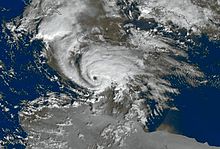This is an old revision of this page, as edited by Stormmeteo (talk | contribs) at 15:06, 15 December 2013 (Reverted 1 edit by 70.134.228.221 (talk): If you really wanna be picky -> a bot has edited this article yesterday and i'm about to add citations. (TW)). The present address (URL) is a permanent link to this revision, which may differ significantly from the current revision.
Revision as of 15:06, 15 December 2013 by Stormmeteo (talk | contribs) (Reverted 1 edit by 70.134.228.221 (talk): If you really wanna be picky -> a bot has edited this article yesterday and i'm about to add citations. (TW))(diff) ← Previous revision | Latest revision (diff) | Newer revision → (diff)| This article or section is in a state of significant expansion or restructuring. You are welcome to assist in its construction by editing it as well. If this article or section has not been edited in several days, please remove this template. If you are the editor who added this template and you are actively editing, please be sure to replace this template with {{in use}} during the active editing session. Click on the link for template parameters to use.
This article was last edited by Stormmeteo (talk | contribs) 11 years ago. (Update timer) |

A Medicane is a subtropical or tropical cyclonic storm system similar to a hurricane that occurs in the Mediterranean Sea. Even though the Mediterranean is not an official tropical cyclone basin, and thus not under the authority of any Regional Specialized Meteorological Center like the National Hurricane Center, cyclones occasionally form in the mid-latitudes and on very rare occasions in the Black Sea, having properties of a tropical cyclone. A medicane is small, has an axisymmetric cloud structure, generates strong winds, heavy rains and thunderstorms. This phenomenon has often been named Medicane or Tropical-like Mediterranean Storm (T.M.S.).
Origin of the phenomenon
| This section does not cite any sources. Please help improve this section by adding citations to reliable sources. Unsourced material may be challenged and removed. (December 2013) (Learn how and when to remove this message) |
Almost every year, usually in autumn when the Mediterranean Sea is still warm, a depression takes on the characteristics of a subtropical storm with clouds wrapped around an eye, intense thunderstorm activity, strong winds at surface winds and warm temperature in the center clouds. In a satellite image such a system can look very similar to a tropical storm, but without having the dimensions or the power. It may have a diameter between 300 and 420 km (186 to 261 miles). The cyclone may intensify, with winds that can reach over 130 km/h (80mph).

Research shows that the sea surface temperature must be at least 20°C (68°F) for the development of these systems. The Mediterranean Sea reaches 24-28°C (75°F - 82°F) from late August to mid-September. However, the sea surface temperature is not as critical as it is for a purely tropical system that depends on the release of latent heat in a uniform air mass. Indeed, an influx of cold air from land, makes the air mass unstable and gives convection. It is mainly the difference between the sea surface temperature that is important.
Life cycle
| This section does not cite any sources. Please help improve this section by adding citations to reliable sources. Unsourced material may be challenged and removed. (December 2013) (Learn how and when to remove this message) |
The analysis of several cases shows that these weather systems pass through different stages: development, stationary phase and formation of an eye. The systems begin with the development of convective clouds near a low pressure center, heavy rains and thunderstorms.
It is only in the second phase that thunderstorms completely surround the center of rotation and an eye forms. At this point, the system is more or less stationary and winds increase to over 40 km/h (25 mph). Finally, the storm begins to move quickly, 37 km/h (23 mph), on a well defined path with winds exceeding 80 km/h (50mph), while the rate of precipitation generally decreases when passing over land.
References
- http://en.ria.ru/strange/20120127/170988652.html
- http://link.springer.com/article/10.3103%2FS1068373908040067#
- http://query.nytimes.com/gst/abstract.html?res=F4061EF73B5A12738DDDAF0994DB405B868CF1D3
External links
- Official EUMETSAT Website
- EUMETSAT weather satellite viewer
- Website monitoring Medicane activity
- Scientific article about Medicanes
| Cyclones and anticyclones of the world (centers of action) | |||||||||||||||||||||||||||||||||||||||||||||||
|---|---|---|---|---|---|---|---|---|---|---|---|---|---|---|---|---|---|---|---|---|---|---|---|---|---|---|---|---|---|---|---|---|---|---|---|---|---|---|---|---|---|---|---|---|---|---|---|
| Concepts | |||||||||||||||||||||||||||||||||||||||||||||||
| Anticyclone |
| ||||||||||||||||||||||||||||||||||||||||||||||
| Cyclone |
| ||||||||||||||||||||||||||||||||||||||||||||||